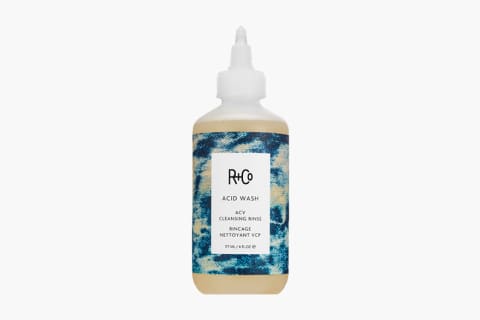You probably don’t know the pH. As a little chemistry lesson, everything has a pH level that ranges from 0 to 14. When the pH is neutral, that means it’s right in the middle at 7; it’s acidic when it’s below that, and when it’s alkaline when it’s above. Your scalp, like the rest of your skin, runs at about 5.5. This is all important because your skin’s pH is and can be affected by the products you are putting on it. Here’s what we know from research1: When a shampoo has a pH level that is at or below 5.5, it reduces frizz and friction between fibers, which means less damage overall. It also means the scalp stays at its natural pH. When a shampoo has a pH higher than that, it “may increase the negative electrical charge of the hair fiber surface and, therefore, increase friction between the fibers; this may lead to cuticle damage and fiber breakage,” according to a study on the pH of hair products2. So pH in hair care should be a real concern. In that same study, the researchers found that of mass brands, 66% of the shampoos had an alkaline pH. Professional or prestige brands scored better, with only 25% having an alkaline pH. (Dandruff shampoos scored the worst, with 81% having a higher pH.) If you suspect this is you, there are a few things you can do. The first step is to nix sulfates, if you haven’t already. (Part of what makes sulfates so drying is the fact that they are anionic detergents, which strip hair’s nutrients and leave an alkaline residue in its place.) Instead, look for shampoos with balancing, fatty-acid-derived surfactants, like sodium cocoyl isethionate and sodium methyl cocoyl taurate. “For a while we thought surfactants were bad for your hair and you were never supposed to use them, but these ones derived from coconuts work really well and won’t fade color,” says Thompson. But even if you’ve done that, your pH can be altered naturally through your water or other environmental aggressors. “Water’s pH can vary, but it’s usually around a 7—so when you wash it, you are bringing your hair’s pH up to a mid 6—that’s the same pH as a demi-permanent color,” says Thompson. “And that’s every time you wash your hair.” So one more thing you can try is an acidic hair rinse. These are products typically made with acidic apple cider vinegar, but you can also DIY your own apple cider vinegar hair rinse. “These are going to balance the pH level of the scalp and close the cuticle, so your hair is smoother and shinier,” says Monarch. But never put just straight vinegar on your hair; you’ll go too far toward the other end of the pH spectrum. So until shampoos and other hair products start slapping their pH on their product labels (some brands in Europe already do it!), there’s no way to tell how alkaline your wash is. But with these general guidelines, you’ll be better equipped to figure it out on your own.




